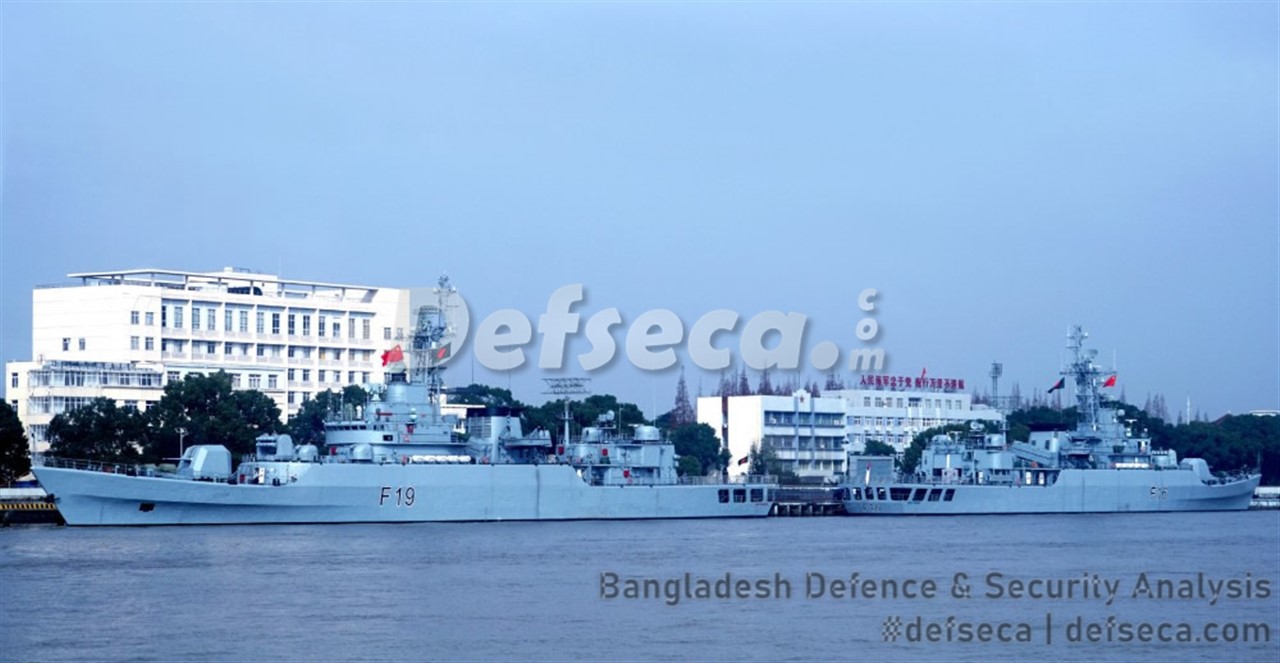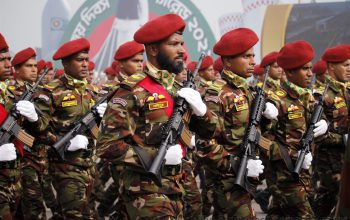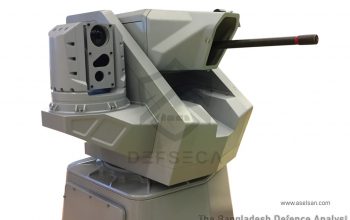Bangladesh and China continue to maintain strong relations despite Sheikh Hasina’s pro-India image. The relations between Bangladesh and China have reached new heights of cooperation under the Hasina led Bangladesh Government.
India conspired to put a wedge between Bangladesh and China by helping Myanmar during the Rohingya crisis knowing it could possibly lead to strain in Bangladesh-China ties because of the Communist nation’s strong interest in Myanmar.
However the two countries worked tirelessly to overcome such rough patches understanding that countries such as India and Myanmar should not be allowed to harm the strategic relations between the two all weather friends. Today Bangladesh is China’s second largest arms client after Pakistan. In some years Dhaka even surpasses Islamabad’s procurement trade with China.
In the latest round of acquisitions the Bangladesh Army ordered 140 VT-5 light tanks, the Navy purchased two more Type 053H3 guided missile frigates and its subsidiary, the Khulna Shipyard acquired material package for building 5 coastal patrol craft indigenously with the assistance of CSOC. The Bangladesh Navy is also working with China to build the country’s first comprehensive submarine base complete with self-contained MRO facilities to overhaul and repair submarines at the base. Named after Sheikh Hasina the base is a symbol for the strong military relations between the two countries that the Prime Minister herself attaches.
The Bangladesh Navy may also award CSOC a contract for 6 guided missile frigates, which are to be built at Chittagong Dry Dock Ltd. The Chattogram based shipyard is to be upgraded to a world class shipbuilding facility for the construction of major naval warships, submarines and merchant marine ships with the help of the Chinese.
The Bangladesh Air Force will also receive another 9 K-8W intermediate jet trainers. It is also on course to purchase J-10 single-engine multi-role fighter aircraft to replace the F-7 series of interceptors. No less than three squadrons of F-7’s are presently operational with the air force today. Except for the helicopter and transport fleet the Chinese have maintained a strong presence in the BAF’s fighter, trainer and radar units.
In recent times China supplied over 60,000 assault rifles, light machine guns, machine guns and sniper rifles to the Border Guard Bangladesh. Equipped with mostly Chinese hardware the force is regarded as Bangladesh’s second Army. It is also purchasing thousands of anti-tank guided missile systems from the Chinese to bolster its operational capabilities.
Chinese defence technologies have improved substantially since the 1980’s. Moreover Bangladesh’s purchasing power also improved enabling acquisition of better quality arms despite commonly held belief circulated on the international arena that “Made in China” equates to poor quality.
Bangladesh and China will continue to develop the military ties to new levels despite challenges. Bangladesh finds China as a counter to India’s hegemonic pressures. On the other hand the Chinese view Bangladesh as a potentially more stable long term alternative to Pakistan. An economically strong Bangladesh will be good for Chinese businesses including the state’s defence industries.
Bangladesh-China ties are ancient spanning thousands of years since the Qin dynasty period. The Treasure voyages led by the Chinese Muslim admiral Zheng He visited the Bengal Sultanate several times.
Chinese premier Zhou Enlai visited East Pakistan several times in the 1950s and 60s. The Chinese Communist Party maintained close ties with Bengali nationalist leaders Maulana Abdul Hamid Khan Bhashani and Huseyn Shaheed Suhrawardy. Bhashani in particular, was considered close to Mao Zedong. While serving as the Prime Minister of Pakistan in 1957, Awami League president H. S. Suhrawardy became the first Pakistani leader to make a state visit to the PRC.
China and Bangladesh established diplomatic relations in January 1976. The period coincided with the recognition of the PRC as the sole legitimate government of China by most of the world. The period also saw the Chinese begin to embrace market socialism. President Ziaur Rahman, who restored free markets in Bangladesh, visited Beijing and the laid the groundwork for the relationship; while numerous Chinese leaders visited Dhaka in the late 1970s.
By the mid-1980s, China had forged close military, commercial and cultural ties with Bangladesh and also supplied it with military aid and equipment. The then-president of Bangladesh Hossain Mohammad Ershad was warmly received in Beijing in July 1987. A Bangladesh-China friendship bridge was constructed and inaugurated over river Buriganga connecting Dhaka and Munshiganj by the Chinese as a token of this newly advancing diplomatic and military relationship.
Bangladesh is third largest trade partner of China in South Asia. But, the bilateral trade between them is highly tilted in favour of Beijing. The Bangladesh Army has been equipped with Chinese tanks, its navy has Chinese frigates and missile boats and the Bangladesh Air Force flies Chinese fighter jets. In 2002, China and Bangladesh signed a “Defence Cooperation Agreement” which covers military training and defence production.




